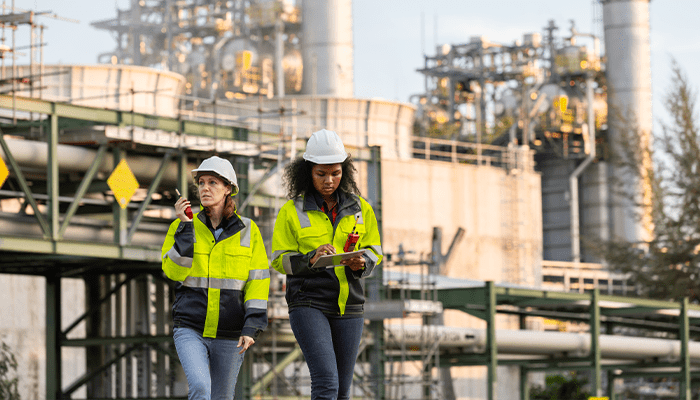
Challenges the Construction Industry is Facing in 2022
The construction industry is one of the largest sectors in the US economy. Nearly $1.4T worth of structures are constructed each year and it employs more than seven million workers across 733,000 businesses. As 2022 kicks off, many of these construction industry professionals will be wondering what issues & challenges we will face in the next 12 months. While the PPP funds in 2020 and 2021 were life savers to many businesses, we are unlikely to see similar measures in the future. Things are slowly getting back to normal, but that doesn’t mean there still aren’t challenges to the industry in 2022. Some issues described below are unique to the construction industry, and others are the same issues being faced across other sectors.
- Shortage of Qualified Workers – Employment woes in the industry were exacerbated by the pandemic the past two years. At the end of November 2021, there were 345,000 unfilled construction jobs. This was down from the figure in October 2021, but much higher than prior years. Studies have shown that the United States needs 1,000,000 new construction workers in the next 2 years. Modular construction and technology have allowed some companies to do “more with less,” with an added benefit in that drones, software, robotics, 3-D printing, and other digital tools have created new highly skilled jobs in an industry that was falling behind in innovation. We still have a long way to go, but progress has been made.
- Supply Chain Disruption and Materials Sourcing Issues – We’ve all seen the news and 2021 was a rough year. While we may not see the same price volatility we saw in 2021, some construction materials still are not readily available. Sourcing issues are made worse by stockpiling of materials, which will continue in 2022. Since long-term price lock is a thing of the past, coupled with thin inventory, construction materials, which are normally purchased as needed, are now purchased in bulk, and stored at the job site (or warehouse) by the owner or contractor to be used for the duration of the project. Stock-piling of inventory includes oil and natural gas products (think gas and diesel), which further exacerbates the price hikes we all see at the pump. Stock-piling fixes one problem but creates further strain on the supply chain. It’s also created a new issue not normally seen in prior years. Some of these stored materials may not be covered by the builder’s risk policy if not stored behind a fence and locked up, and not all contracts allow for payment of stored materials, so it could create unforeseen insurance and cash flow issues on a project. Alternative construction materials such as bendable concrete and mass timber help mitigate some of the supply chain problems, but these materials are price-prohibitive and not widely adopted, so their demand is limited. Studies show some of the supply chain issues will start tapering off in the 3rd quarter of 2022, but it will be a bumpy ride to start the year.
- Covid-19 – Covid-19 variants continue to pop up and could wreak havoc on worker safety, morale, and labor participation. Lessons have taught us to have a safety plan in place and adhere to it. An unsafe work environment will not be tolerated by employees or project owners. A safety plan is a necessity going into 2022, as it is not if but when we will see another wave hit us.
- Inflation – Inflation readings show that we are experiencing the highest inflation rate since 1982. It is coming in at 6.8% through November 2021. The flip side is it could help companies get signed contracts, increase backlog, and at the same time fill jobs. It’s strange to think about, but it could push builders into getting contracts signed now versus waiting. Interest rates appear to be headed higher based on recent FOMC meeting minutes, so the longer an owner waits to issue contracts and get a project underway, the more expensive it could be. Additionally, as consumer buying power is pushed to the breaking point, many potential workers will look for other jobs and careers, opening the door to recruitment into the construction industry. Some of the potential workers that have left the workforce may decide to jump back in as well to fix household budget shortfalls.
- Cybercrime – Ransomware, social engineering, and cyberattacks are not only frustrating, but they have a significant impact on a company’s time and money. Looking back 12 months, 75% of construction-related companies experienced a cyber incident. Some incidents can take a week or more to rectify, and if a customer’s personal data is breached legal issues can drag on for years. Cyber claims such as invoice manipulation, deceptive fraud, and computer funds transfer are first party losses to the insured and not automatically covered by a crime policy or a cyber policy. These are add-on coverages, so be sure and read policy language. The number of cyberattacks will only increase in 2022, so if you do not have a plan to safeguard your IT resources, now is the time to create it and prevent the headaches that come along with a cyber breach event.
- Weather – For our contractors on the coasts, after a busy hurricane year in 2021, and near record rainfall for the southern U.S., CSU is showing a 65% chance for an average to above-average hurricane season. They expect at least 13-18 named storms, 6-11 hurricanes, and 2-5 major hurricanes. The season officially begins June 1, 2022, and ends on November 30, 2022. Clearly, this is expected to be a busy season, which will affect the progress of many jobs during the second half of 2022. When bidding jobs, it would be good to consider more rain delays rather than fewer, to prevent the hurt feelings that come with a missed project delivery deadline.
The good news is a strong construction market is forecasted for 2022. As history has shown, the construction industry is resilient and will adapt to create a “new normal”. We can expect projects to cost more, take longer to start, and longer to finish, offset by strong demand across most sectors. The only two categories of construction most have forecasted as decreasing are retail and private office construction. With the evolution of technology and the fact many types of jobs that can be performed remotely, the demand for more office space has fallen drastically. Similarly, with retail industry’s adoption of online retail platforms, the need for a physical storefront has fallen as well. However, factory output is close to where it was pre-pandemic, and the supply chain woes will slowly correct themselves over the next six months.
Some advice for 2022 is to remain diligent in revising contracts with your attorney to address the issues we see coming down the pipe. Drill down on project delays beforehand in the contract, so there are no surprises. Go overboard on communication. Communication goes a long way to prevent “challenges,” from becoming “problems.” Always remember to document!
If you are concerned about how some of these issues will affect you or your business, please contact an AssuredPartners Construction team member. Our team of experts will sit down with you and review your company’s risks to come up with a blueprint to properly protect your business assets. We will make sure you are prepared to weather the storm in 2022!
Featured News & Insights

The construction insurance market is seeing shifts that will impact contractors in the year ahead. Some lines of coverage remain stable, while others are facing increased scrutiny from carriers....

When it comes to construction, safety is always priority number one. You already know that personal protective equipment (PPE) is a must to keep your team safe from hazards on the job. But here’s...

In the construction industry, contracts define relationships, responsibilities, and expectations among contractors, subcontractors, and owners. One of the most important yet often misunderstood...